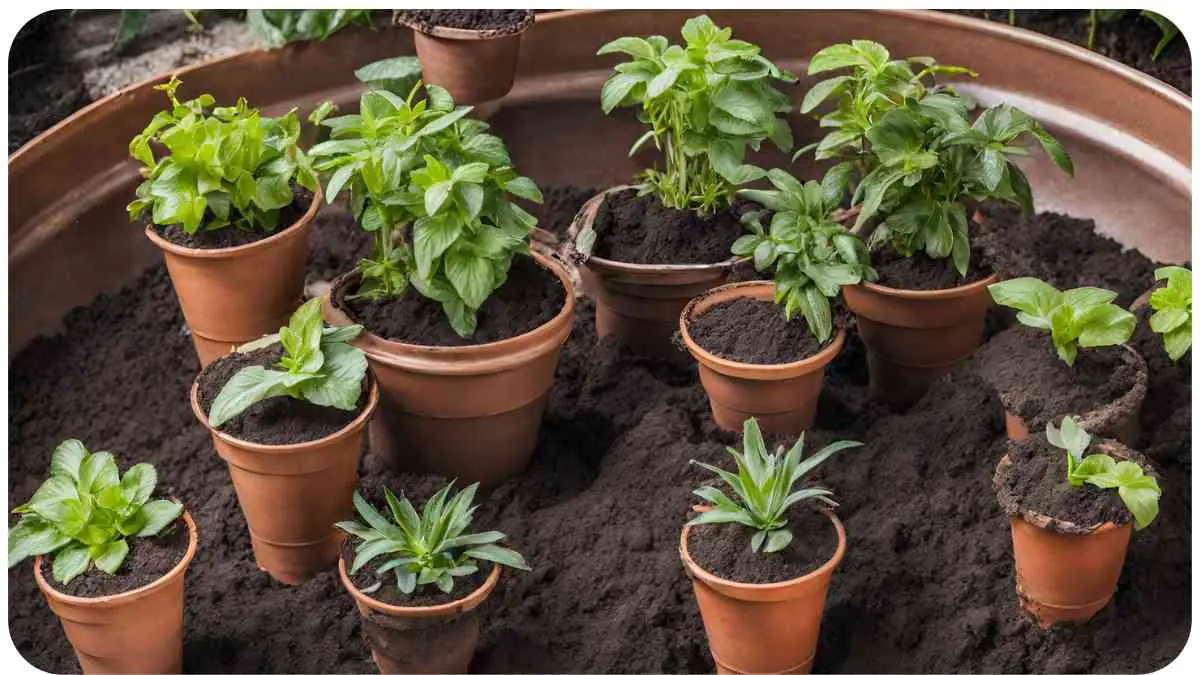When it comes to gardening, one of the most crucial elements to consider is the soil. Whether you’re a novice gardener or a seasoned pro, knowing how much potting soil you need for your containers is essential for the health and success of your plants.
In this article, we’ll explore the factors that influence soil quantity, how to calculate the amount of potting soil required for a 30-gallon pot, recommended brands, tips for efficient use, common mistakes to avoid, and even DIY potting soil recipes.
| Key Takeaways |
|---|
| 1. Calculating the volume of a 30-gallon pot involves determining its dimensions and using the formula for the volume of a cylinder. |
| 2. Factors such as pot size, plant type, drainage needs, and soil settling affect the quantity of potting soil required. |
| 3. Choosing the right potting soil brand and using it efficiently can promote healthy plant growth and minimize waste. |
| 4. Avoid common mistakes when purchasing potting soil, such as choosing low-quality soil or overlooking drainage needs. |
| 5. Experiment with DIY potting soil recipes to customize the soil mix for different types of plants and growing conditions. |
2. Understanding Potting Soil Needs
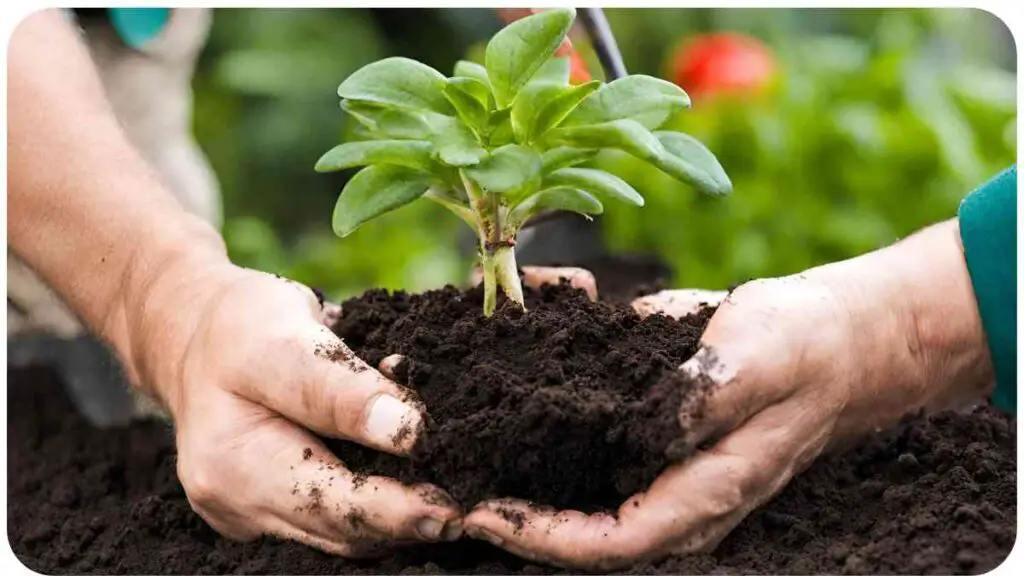
Before diving into the specifics of how much potting soil is needed for a 30-gallon pot, it’s important to understand the role of potting soil in container gardening. Potting soil serves as the growing medium for plants in containers, providing essential nutrients, aeration, and moisture retention. Unlike garden soil, potting soil is specially formulated to meet the needs of container plants and is typically lighter and more porous.
When planning your pepper garden, it’s vital to determine the right amount of potting soil to ensure optimal growth and yield. Proper soil depth supports healthy root development, contributing to robust pepper plants and abundant harvests.
3. Factors Affecting Soil Quantity
The amount of potting soil required for a 30-gallon pot can vary depending on several factors:
| Factor | Description |
|---|---|
| Pot Size | Larger pots require more soil to fill adequately and provide ample space for root development. |
| Plant Type | Different types of plants have varying root systems and space requirements, affecting the amount of soil needed. |
| Drainage Needs | Plants that require excellent drainage may need a deeper layer of soil, impacting the total quantity required. |
| Soil Settling | Potting soil tends to settle over time, so it’s essential to account for potential settling when calculating quantities. |
4. Calculating Potting Soil Requirement
Calculating the amount of potting soil needed for a 30-gallon pot involves a straightforward process. Here’s a step-by-step guide:
4.1 Determine Pot Volume
The first step is to calculate the volume of the pot. Since pots are generally cylindrical in shape, you can use the formula for the volume of a cylinder:
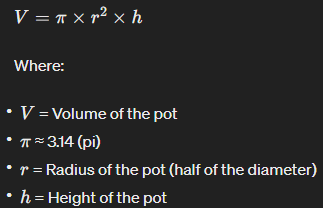
4.2 Convert Volume to Quarts
Once you have the volume in cubic inches, you’ll need to convert it to quarts, as potting soil is typically sold in quarts or cubic feet.
1 cubic foot≈25.71 quarts
1cubic foot≈25.71quarts
4.3 Account for Settling and Drainage
To ensure you have enough potting soil to fill the pot adequately and account for settling, it’s recommended to add a buffer of around 10-20%. Additionally, if your plants require excellent drainage, you may need to add a deeper layer of soil, further increasing the quantity needed.
Achieving lush, vibrant plumeria blooms relies on choosing the best potting mix for your tropical beauties. A well-draining mix with ample nutrients fosters strong root systems, promoting vigorous growth and prolific flowering in your prized plumeria specimens.
4.4 Example Calculation
Let’s consider an example where we have a 30-gallon pot with a diameter of 24 inches and a height of 18 inches:
Calculate the volume:
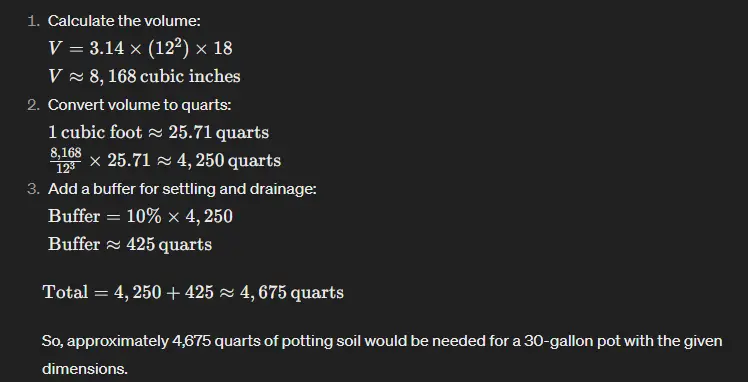
5. Recommended Potting Soil Brands
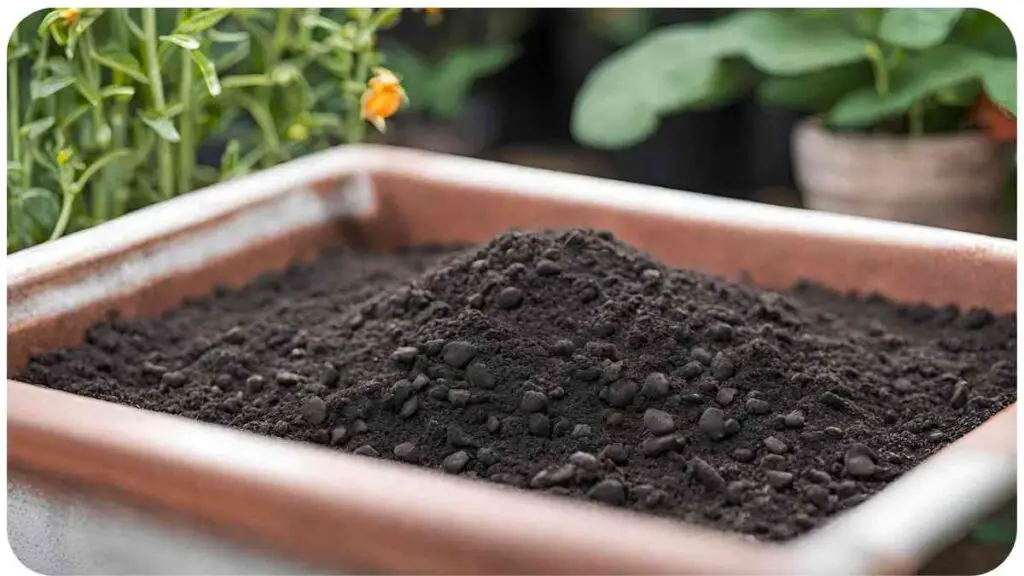
Choosing the right potting soil is crucial for the health and vitality of your plants. Here are some top-rated potting soil brands that gardeners swear by:
| Brand | Description |
|---|---|
| Miracle-Gro | Known for its consistent quality and ability to promote healthy plant growth, Miracle-Gro offers a range of potting mixes suitable for various plant types. |
| FoxFarm | FoxFarm’s Ocean Forest Potting Soil is a favorite among organic gardeners, enriched with nutrients and beneficial microbes for robust plant development. |
| Espoma | Espoma’s organic potting mixes are formulated with all-natural ingredients, providing a nutrient-rich environment for plants without synthetic additives. |
These brands offer a diverse selection of potting soils tailored to different plant needs, ensuring you find the perfect match for your gardening endeavors.
6. Tips for Using Potting Soil Efficiently
6.1 Choose the Right Soil Mix
Select a potting soil mix that is suitable for the specific needs of your plants. Consider factors such as drainage, aeration, and nutrient content to ensure optimal growing conditions.
6.2 Fill Containers Properly
When filling containers with potting soil, avoid compacting the soil too tightly. Gently fill the container, allowing for adequate aeration and root development.
Maintaining healthy container plants involves knowing when to refresh your potting soil to sustain optimal growing conditions. Over time, soil compaction, nutrient depletion, and microbial activity affect plant health, highlighting the importance of periodic soil replacement to support thriving potted plants.
6.3 Use Mulch
Applying a layer of mulch on top of the potting soil can help retain moisture, suppress weeds, and regulate soil temperature, reducing the need for frequent watering and soil replenishment.
6.4 Incorporate Compost
Mixing compost into your potting soil can enrich it with essential nutrients and improve soil structure, promoting healthy root growth and overall plant vigor.
6.5 Practice Proper Watering
Water your plants consistently, ensuring that the potting soil remains evenly moist but not waterlogged. Avoid overwatering, as it can lead to root rot and other issues.
6.6 Reuse Potting Soil
After each growing season, consider reusing potting soil by refreshing it with compost and other amendments. This not only saves money but also reduces waste and promotes sustainability.
By following these tips, you can make the most out of your potting soil and create an ideal growing environment for your plants.
For anoles’ habitat, it’s crucial to choose the right potting soil to ensure their well-being. Anoles thrive in substrates with proper texture and moisture retention, providing a comfortable environment for these arboreal reptiles to exhibit natural behaviors and flourish in captivity.
7. Mistakes to Avoid When Buying Potting Soil
While selecting potting soil, it’s essential to avoid common mistakes that could compromise plant health and growth. Here are some pitfalls to steer clear of:
7.1 Choosing Low-Quality Soil
Opting for cheap or low-quality potting soil may seem like a cost-effective choice initially, but it can lead to poor plant performance and increased susceptibility to pests and diseases.
7.2 Ignoring Soil Composition
Not considering the composition of the potting soil, such as its pH level and nutrient content, can result in imbalanced soil conditions that are unfavorable for plant growth.
7.3 Overlooking Drainage Needs
Failing to select a potting soil mix with adequate drainage properties can lead to waterlogged soil, root rot, and other moisture-related issues, especially for plants sensitive to soggy conditions.
7.4 Neglecting Soil Amendments
Neglecting to amend potting soil with compost, perlite, or other organic matter can deprive plants of essential nutrients and hinder root development, leading to stunted growth and poor yields.
7.5 Underestimating Quantity Needed
Underestimating the amount of potting soil required for your containers can result in insufficient coverage and inadequate root support, impacting plant health and overall productivity.
Avoiding these mistakes will help you make informed decisions when purchasing potting soil and ensure optimal growing conditions for your plants.
8. DIY Potting Soil Recipes
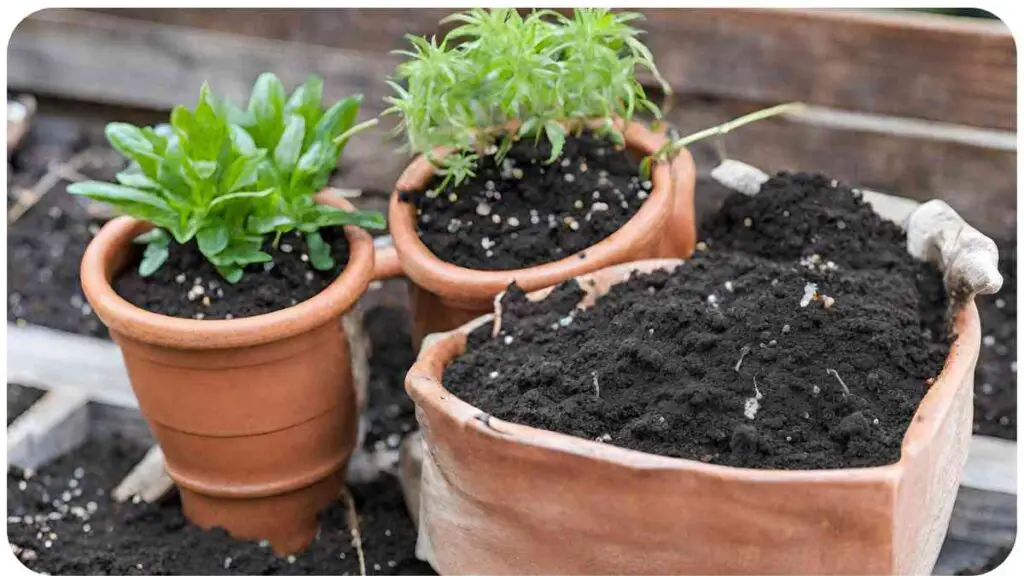
Creating your own potting soil allows you to tailor the mix to suit the specific needs of your plants while also saving money. Here are a few DIY potting soil recipes to consider:
Refresh your container garden’s vitality by replacing the potting soil with this comprehensive guide. Whether rejuvenating exhausted soil or transitioning to a new planting season, proper soil replacement promotes optimal plant growth, ensuring your container plants thrive throughout their lifecycle.
8.1 Basic Potting Mix
This simple recipe provides a good all-purpose potting mix suitable for a wide range of plants:
| Ingredient | Quantity |
|---|---|
| Peat moss | 1 part |
| Perlite | 1 part |
| Compost | 1 part |
Mix the ingredients thoroughly to ensure even distribution of nutrients and moisture-retention properties.
8.2 Succulent/Cactus Mix
For succulents and cacti that require excellent drainage, use the following recipe:
| Ingredient | Quantity |
|---|---|
| Cactus mix | 2 parts |
| Perlite | 1 part |
This mix provides the fast-draining, sandy soil conditions that succulents and cacti thrive in.
8.3 Seed Starting Mix
When starting seeds, it’s essential to use a lightweight, sterile mix that promotes healthy germination. Try this recipe:
| Ingredient | Quantity |
|---|---|
| Peat moss | 2 parts |
| Vermiculite | 1 part |
| Perlite | 1 part |
This mix provides the ideal balance of moisture retention and aeration for successful seed starting.
8.4 Raised Bed Mix
For raised bed gardening, where soil compaction can be an issue, use the following recipe:
| Ingredient | Quantity |
|---|---|
| Garden soil | 1 part |
| Compost | 1 part |
| Perlite | 1 part |
| Peat moss | 1 part |
This mix improves soil structure, fertility, and drainage in raised bed gardens.
8.5 Acid-Loving Plant Mix
For plants that prefer acidic soil, such as azaleas and blueberries, consider this recipe:
| Ingredient | Quantity |
|---|---|
| Peat moss | 2 parts |
| Pine bark fines | 1 part |
| Perlite | 1 part |
This mix provides the low pH and good drainage that acid-loving plants require.
Experiment with these DIY potting soil recipes, adjusting the proportions as needed to meet the specific requirements of your plants and growing conditions.
9. Conclusion
Determining how much potting soil you need for a 30-gallon pot is essential for successful container gardening. By considering factors such as pot size, plant type, drainage needs, and soil settling, you can calculate the required quantity accurately.
Additionally, choosing the right potting soil brand, using it efficiently, avoiding common mistakes, and even creating your own DIY soil blends can further enhance your gardening experience. With the right knowledge and preparation, you can create thriving container gardens that yield bountiful harvests and vibrant blooms. Happy gardening!
Further Reading
Here are some additional resources to explore for more information on calculating potting soil requirements:
- GardenTap Volume Charts: GardenTap provides volume charts that can help you accurately calculate the amount of soil needed for various container sizes.
- Harvest to Table: Container and Pot Sizes: Harvest to Table offers insights into container and pot sizes, including guidance on determining the amount of soil required for different containers.
- Smart Pots Soil Calculator: Smart Pots offers a soil calculator tool to assist gardeners in estimating the quantity of soil needed based on pot size and depth.
FAQs
How do I calculate the volume of a 30-gallon pot?
To calculate the volume of a 30-gallon pot, you can use the formula for the volume of a cylinder, considering the pot’s diameter and height.
What factors affect the quantity of potting soil needed?
Several factors, including pot size, plant type, drainage needs, and soil settling, can influence the amount of potting soil required for a container.
Can I reuse potting soil from previous seasons?
Yes, you can reuse potting soil by refreshing it with compost and other amendments to replenish nutrients and improve soil structure.
How do I ensure proper drainage in my container?
To ensure proper drainage, use a potting mix with adequate drainage properties and consider adding a layer of gravel or perlite at the bottom of the container.
Are there alternatives to commercial potting soil?
Yes, you can create your own potting soil blends using ingredients like peat moss, perlite, compost, and vermiculite to customize the mix to your plant’s needs.

For 15 years, Hellen James has worked in the gardening industry as an expert and landscape designer. During her career, she has worked for a variety of businesses that specialize in landscaping and gardening from small firms to large corporations.

